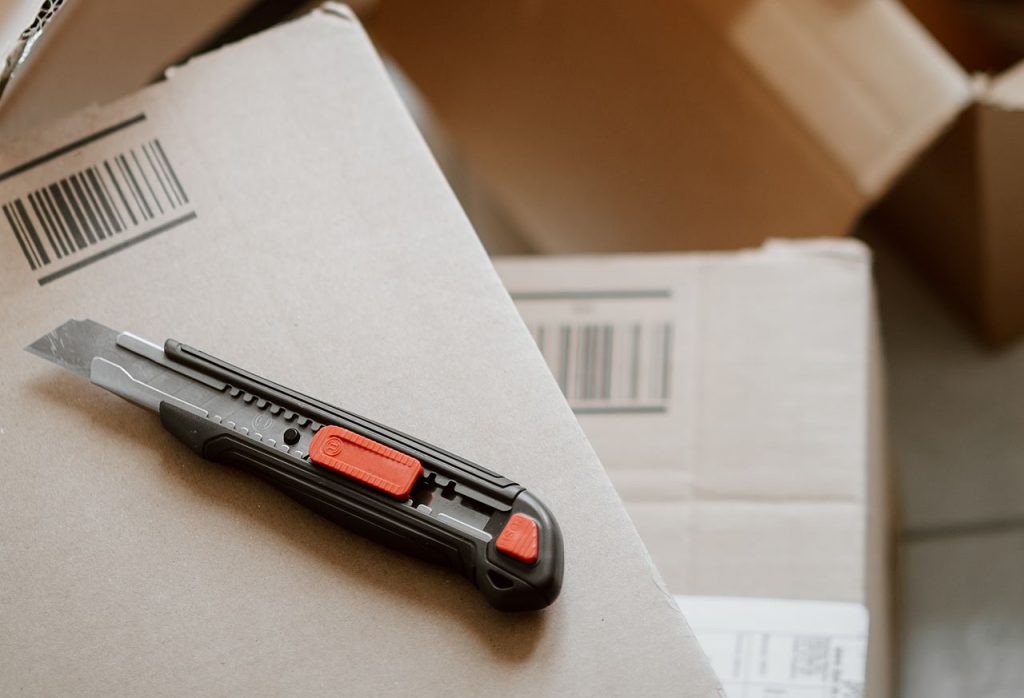Utility knives are some of the most versatile tools on the market. They bridge the gap between industrial and household settings, as they can easily be used for both tougher applications and do-it-yourself (DIY) craft projects. They’re a must-have for anyone’s toolbox, regardless of skill level or familiarity.
Of course, as with any tool with a blade, it’s crucial that you keep yourself safe while using a utility knife. Accidents can lead to life-altering injuries as well as exponentially high hospital bills. Let’s dive into important safety tips to consider when using a utility knife.
What Is a Utility Knife?
Utility knives are hand tools that can be used for common household tasks or on a factory floor. They’re usually more hefty in design and weight to help facilitate tougher tasks. Common blade materials for utility knives include carbon steel, stainless steel, zirconium oxide, and titanium. As for knife handles, most are made of aluminum, stainless steel, plastic, or glass-filled nylon. There are a handful of blade control options for utility knives. The most common is manual retraction. With these utility knives, the user can lock the blade in two positions: exposed and retracted. Auto-retractable utility knives take the safety aspect up a notch with the release of a slider, which automatically retracts the spring-loaded blade.
Lastly, smart-retracting knives are perfect for those who prioritize safety above all else. The blade self-retracts when it loses contact with its cutting surface.
High-quality utility knives can cut a myriad of materials, including triple-wall corrugated cardboard, clamshell packaging, plastic, drywall, packing tape, vinyl flooring, foam insulation, rope, and more.
Utility Knife Safety Tips
Always Wear Gloves
You should wear cut-resistant gloves when wielding any kind of tool, but especially a utility knife. It’s best to don at least one on the hand that’s holding the object/material in place. This ensures that your fingers and hands are protected in case your knife slips. Of course, a safer blade is a higher priority than just grabbing a pair of gloves, considering cuts can happen elsewhere like legs and torsos.
Consider purchasing a utility knife with a blade that’s made of zirconium oxide, an advanced ceramic boasting hardness that surpasses steel. Zirconium oxide isn’t prone to breakage, nor does it rust. In addition, it’s safe to touch. An accidental drop or forgetting to retract the utility knife blade could mean you’re less likely to injure yourself.
Keep Blade Retracted When Not in Use
Speaking of retraction, when you’re done working with the knife or you need to briefly set aside your tool, be sure to retract the blade. The last thing you want is for someone else to suffer an unnecessary injury because your utility knife blade is out in the open.
That’s why it’s vital to have a knife with a retraction feature, preferably auto-retractable or smart-retracting. This gives you total control over your tool and lessens the risk of accidents.
Cut on a Stable Surface
This one is pretty self-explanatory, but it bears repeating: Always cut on a stable, solid surface. If you’re slicing a smaller object or material, make sure to have it on a surface that’s bereft of clutter or anything that prevents you from cutting with a steady hand. Maintain Proper Upkeep of Your Knife
Get in the habit of routinely cleaning your tool. In addition, inspect your knife to ensure its stability and effectiveness. It’s important to find a utility knife with a quality handle that can withstand the elements.
Glass-filled nylon is a perfect material for this. Not only is it durable, but it’s also comfortable to hold in your hand. This is optimal if you’re continuously using your knife; you won’t have to worry about muscle strain.
If Your Knife Falls, Don’t Try to Catch It
Let it fall! Don’t try to catch it with your hands or your feet. Attempting to grab a free-falling knife increases your chances of cuts and lacerations. Just make sure you and those around you are out of its radius. You can pick it up once it’s flat on the ground.
Always Cut Away From Yourself
This especially applies to opening boxes. There’s the strong urge to pull your dominant hand back while you’re slicing through packing tape on a package, but you should be cutting outward instead. Again, this ensures your safety and minimizes your risk of accidental injuries.
Make Sure the Blade Is Sharp
A dull or rusted blade is a recipe for disaster. If you try to use one, you’re making yourself vulnerable to injuries. Additionally, a sharp blade is much easier and safer to operate than a dull/rusted one.
A utility knife with a zirconium oxide blade stays sharp for much longer than standard steel, meaning you don’t have to worry about frequently sharpening it. That also translates to less blade changes. You’ll have more money in your pocket since you won’t have to spend as much on blades.
Ready to Choose a Utility Knife?
As you can see, utility knives can make most tasks and projects easier to execute so long as you protect yourself first. Follow the above safety tips, and you’ll be good to go.

